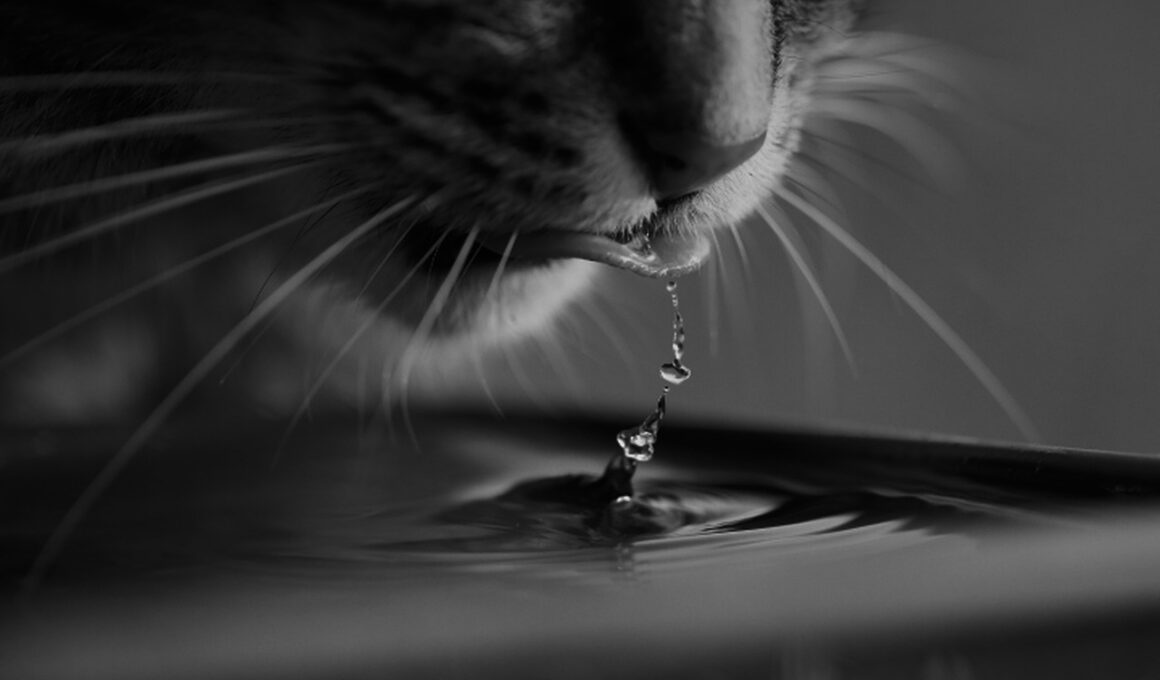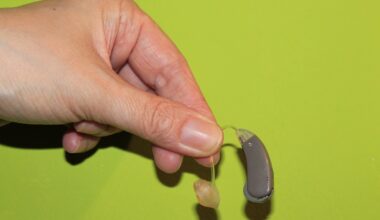Encouraging Your Cat to Drink More Water
Ensuring your cat drinks enough water is essential for their health and well-being. Cats are notoriously finicky drinkers, which can lead to dehydration and kidney issues. It’s crucial for cat owners to take steps to encourage hydration daily. Start by providing fresh and clean water for your feline. Cats are less likely to drink stale or dirty water, so changing their water bowl regularly is vital. Additionally, consider the bowl’s material; some cats prefer ceramic or glass bowls over plastic. Another useful tip is to place multiple water bowls in different locations around your home to entice your cat to drink more. You might be surprised to find that your cat may prefer a bowl in a quiet, less-trafficked area rather than a bowl in the kitchen. Also, elevate the bowl slightly to make drinking easier for your cat. Incorporating wet cat food into their diet is another way to boost hydration; canned food contains approximately 80% water. Lastly, be patient, as each cat is unique in their drinking preferences and habits.
Introducing Water Fountains
Water fountains can be a game changer for encouraging your cat to drink more. Cats are naturally attracted to running water because it seems fresher and cooler than still water. Investing in a cat water fountain can stimulate their interest in drinking, making it a fun experience. These fountains continuously circulate water, which not only keeps it clean but also entices playful cats to engage with it. When selecting a fountain, ensure it is made from safe materials such as stainless steel or BPA-free plastic. Additionally, look for a fountain that is easy to clean, as hygiene is essential for your cat’s health. An easy-to-use filtration system is beneficial in maintaining good water quality. Cats enjoy the sound of flowing water, which can also encourage them to drink more throughout the day. Monitor your cat’s behavior around the fountain, as some may take time to adjust. It’s important to gradually introduce the fountain alongside their usual water bowl. Encourage them by showing curiosity, as cats are more likely to explore what other animals do, thus enhancing their water consumption.
Adding flavor to your cat’s water can make it more appealing and encourage them to drink more. Flavored water can be achieved by mixing in a small amount of low-sodium chicken or beef broth. Make sure to choose broth brands without onions or garlic, as these ingredients can be harmful to cats. Although this method can tempt your cat to increase their fluid intake, it should only be used sparingly, along with their regular water supply. Introducing cat-friendly flavor enhancements occasionally will keep your feline’s palate entertained without overwhelming their taste preferences. You could also use catnip-infused water or herbal blends that are safe for cats. Monitor your cat after introducing new flavors; observe any signs of an upset stomach and revert to plain water if necessary. Engaging in this step will allow you to tailor their hydration strategy while keeping their health in mind. Always ensure that flavor additives do not replace fresh water but instead work as an addition to encourage drinking. Remember that hydration is key in maintaining your cat’s overall health and well-being, especially as they age.
Creating a Hydration Routine
Developing a hydration routine for your cat can help them recognize when it’s time to drink. Just like humans, animals can benefit from consistency. Start by offering fresh water at the same times every day. Cats thrive on familiarity, and routine enables them to form dependent drinking habits. You may find that they eagerly approach their water bowl expecting it to be filled and fresh. You can establish the routine alongside meal times to maximize their hydration intake. For example, after feeding, encourage your cat to have a drink by pointing it out or gently leading them to the water bowl. This routine can enhance their overall consumption over time. Always leave clean water available between these scheduled times to encourage further drinking. Consider setting reminders if you’re busy, ensuring hydration becomes a priority and not neglected during the day. Observe if your cat’s drinking habits change, and adjust the routine accordingly. Ultimately, patience is key in developing successful habits that meet your cat’s needs with a healthy daily intake of water.
Understanding your cat’s behavior and preferences is paramount when encouraging drinking habits. Observe their drinking patterns to identify when they prefer drinking more frequently. Some cats tend to drink more at certain times of the day, while others may have unique preferences for types of bowls or water temperature. If your cat prefers a colder drink, adding ice cubes to their water bowl can make it more appealing. Moreover, it’s essential to acknowledge that they may have specific preferences in bowl depth or shape that leads to better hydration. You can consider experimenting with different bowl designs or heights to find what works best for them. Providing emotional support and creating a positive environment is also vital during this approach. Understand their comfort zones and make their drinking experience stress-free. A well-hydrated cat is a happier, healthier cat. Track their water changes and keep a journal to help monitor their habits. This data can guide you in developing effective strategies to promote better hydration for your furry friend.
Utilizing Cat Treats for Hydration
Incorporating treats that boost hydration into your cat’s diet can also be beneficial. Many commercially available treats contain a high moisture content and can contribute to your cat’s daily fluid intake. These treats can be an excellent supplement alongside dry food. By offering meals with higher moisture content, you engage your cat’s interest while helping them stay hydrated. Look for brands that formulate treats specifically designed for hydration; many cat-safe treats contain water-rich ingredients. It’s also essential to monitor the calorie intake from these treats to keep your cat at a healthy weight. Overindulgence in treats can lead to obesity, a common concern among indoor cats. Using these treats as incentives to encourage drinking from their water bowl can be helpful. You can place the treats near or around the water bowl to promote exploration and make the area more inviting. This tactic can often motivate cats to drink more while reinforcing positive behavior related to the water source. A balanced approach ensures your cat remains healthy and properly hydrated.
Recognizing signs of dehydration in cats is equally important when addressing drinking habits. Symptoms such as lethargy, dry gums, and decreased skin elasticity may indicate that your cat is not consuming enough water. It’s crucial to be aware of these signs and act promptly to increase your cat’s fluid intake. If your cat consistently refuses to drink or displays severe symptoms of dehydration, consult with a veterinarian simultaneously. A veterinary team can guide proper hydration techniques while addressing any health issues. Regular checkups also help you monitor your cat’s weight and overall health, particularly as they age. The right hydration strategy can change your cat’s quality of life and longevity positively. Additionally, providing plenty of opportunities for drinking and understanding their preferences can help in maintaining their health for years to come. By being proactive about your cat’s drinking habits and recognizing when to intervene, you can ensure they stay hydrated and happy. Ultimately, the goal is to create a positive drinking experience that meets their health needs and increases water consumption.


